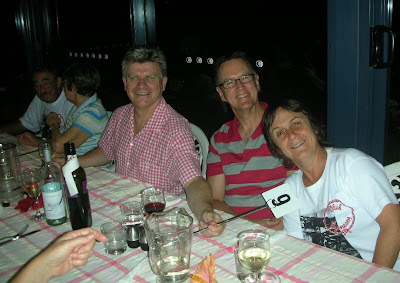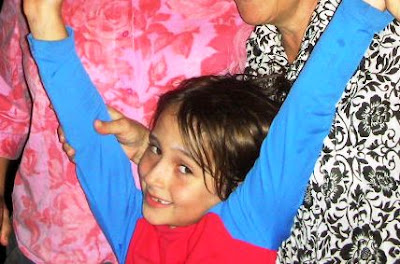
Tuesday, April 21, 2009
Monday, April 20, 2009
Kentia Palm - the origin.

Visit to Lord Howe Island - April 2009
For the third year running the extended Byrne clan spent a week or two in this Pacific paradise.
For the third year running the extended Byrne clan spent a week or two in this Pacific paradise.
The Kentia Palm Nursery visitors’ tour is held each Friday. For about an hour Mr Larry Wilson takes interested tourists around the old orange grove. He was involved in the enterprise in the early 1970s when a decision was taken to reinstate the nursery industry to the island with the blessing of the NSW agricultural authorities.
We were initially shown a series of photographs demonstrating the world-wide popularity of this Lord Howe Island native. Like Lord Howe it self, the palm was formally named after a NSW governor named Forster. Having been called ‘Kentia’ originally it was thought to have no connection with palms from elsewhere. Its botanical name is Howea forsteriana. Recent DNA testing has little connection with other palms apart from one found in North Queensland.
There are four varieties on the island, two only found on the highest parts of the two mountains, Gower and Lidgbird. The ‘curly’ palm does not have the elegance of its cousin and the Kentia. The Kentia has numerous properties which have made it a favourite with decorators, homemakers and film directors for a century. Its leaves have fronds which rise higher than most other palms, taking up less floor space and giving a more pleasing appearance. The Kentia needs very little care and will grow with very little light indoors. It needs little water and is subject to few natural diseases. It is very slow growing.
The Kentia does not develop flowers and fruit for 15 years by which time it usually has a strong but slender trunk.
The nursery sends several million seedlings overseas each year, mostly to Holland and Japan. There are major producers in Italy, Sicily and elsewhere but the germination rate of the Lord Howe grown plants it predictably higher. The industry is competitive but with boxes of up to 2000 seedlings in humidity controlled bags on daily flights to Sydney or Brisbane onward air shipping to Europe, Asia and America can be facilitated.
We were initially shown a series of photographs demonstrating the world-wide popularity of this Lord Howe Island native. Like Lord Howe it self, the palm was formally named after a NSW governor named Forster. Having been called ‘Kentia’ originally it was thought to have no connection with palms from elsewhere. Its botanical name is Howea forsteriana. Recent DNA testing has little connection with other palms apart from one found in North Queensland.
There are four varieties on the island, two only found on the highest parts of the two mountains, Gower and Lidgbird. The ‘curly’ palm does not have the elegance of its cousin and the Kentia. The Kentia has numerous properties which have made it a favourite with decorators, homemakers and film directors for a century. Its leaves have fronds which rise higher than most other palms, taking up less floor space and giving a more pleasing appearance. The Kentia needs very little care and will grow with very little light indoors. It needs little water and is subject to few natural diseases. It is very slow growing.
The Kentia does not develop flowers and fruit for 15 years by which time it usually has a strong but slender trunk.
The nursery sends several million seedlings overseas each year, mostly to Holland and Japan. There are major producers in Italy, Sicily and elsewhere but the germination rate of the Lord Howe grown plants it predictably higher. The industry is competitive but with boxes of up to 2000 seedlings in humidity controlled bags on daily flights to Sydney or Brisbane onward air shipping to Europe, Asia and America can be facilitated.
.
Comments by Andrew Byrne ..
.
Lord Howe Island - a naturalist's observations at North Bay. http://www.redfernclinic.com/c/2007/10/lord-howe-island-naturalists_4153.php4
Sunday, April 19, 2009
Wednesday, April 15, 2009
Thursday, April 9, 2009
Subscribe to:
Comments (Atom)
























































